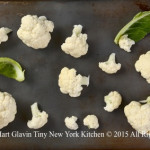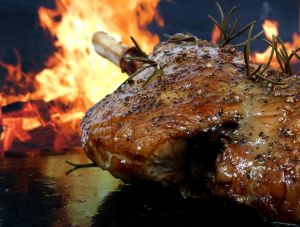Pumpkins range in size from small, creamy white specimens to giant orange globes. Ever so useful as autumnal décor, pumpkins are a versatile and vital source of healthy nutrition.
This festive fall fruit offers a rich source of vitamin C and potassium, both of which may be effective at lowering the risk of heart disease, as well as normalizing blood pressure. The brilliant orange hue of many pumpkin varieties is the result of an abundance of beta-carotene, an antioxidant that transforms into vitamin A in the body. This vitamin may have an effect on boosting the efficiency of immune systems, as well as helping to repair free radical damage to cells.
Pumpkin adds a fabulous, smooth, silky texture and unique flavor to risotto, soup, muffins, cakes, breads, stews, chili, pasta, shakes and so much more. Fresh pumpkin is delightfully delicious and contains an added bonus; pumpkin seeds! Also known as pepitas, roasted pumpkin seeds are lightly crunchy, little gems that are a potent source of zinc, which may be helpful in promoting prostate health.
Pumpkin seeds also offer a significant amount of magnesium, phosphorous, copper, iron, manganese, and omega-3 fatty acids, which may help relieve symptoms of high cholesterol, depression, high blood pressure, and arthritis.
“Work With What You Got!”
© Victoria Hart Glavin Tiny New York Kitchen © 2017 All Rights Reserved
Cauliflower
Whether roasted, mashed, raw or added to pasta dishes, there’s something so comforting about cauliflower’s mild, creamy flavor. Plus, it’s one of the most nutritious vegetables around. What’s not to love?
Cauliflower is a member of the cruciferous family, along with broccoli, cabbage, and kale. These vegetables are an important part of a heart-healthy lifestyle, high in nutrients and fiber and very low in calories.
It’s easier than you might think to separate a whole cauliflower into florets, but if you’re really pressed for time, take advantage of prepared fresh or frozen cauliflower.
To prep cauliflower you will need to first remove the cauliflower’s leaves and cut out the core. Then break into evenly sized florets, cutting any very large ones. Add to a pot of boiling salted water and cook for about 5 minutes. Drain thoroughly. Rinse with cold water if you plan on using it later.
Cauliflower works great as a replacement for higher starch foods like rice, couscous, and potatoes. Steam and mash it to replace potatoes or pulse it in a food processor to create cauliflower “rice” that can be sautéed or steamed and served with curry or chili.
“Work With What You Got!”
© Victoria Hart Glavin Tiny New York Kitchen © 2015 All Rights Reserved
Summer is here and why pay top dollar going out when you can make delicious hot dogs at home? Here is a guide to the different ways Americans make their frankfurters around the country. I had the Sonoran style hot dogs while I was in Tucson in February and absolutely loved them.
New York Style
Served with brown or German mustard and sauerkraut or onions cooked in tomato paste.
Chicago Style
Served on a poppy seed bun with mustard, pickle relish, sport peppers, onions, tomatoes, dill pickles and celery salt. Pepperoncini can be substituted for sport peppers.
Kansas City Style
Served on a sesame seed bun with brown or German mustard, sauerkraut and Swiss cheese.
Atlanta “Dragged Through The Garden” Style
Serve topped with coleslaw.
Detroit “Coney” Style
Served with chili, onions, mustard and cheddar cheese.
Seattle Style
Served with cream cheese and grilled onions.
Phoenix/Tucson “Sonoran” Style
Served as a bacon-wrapped hot dog with pinto beans, onions, tomatoes, mustard, mayo, jalapeno peppers and cheese.
Austin “Tex-Mex” Style
Served with queso, guacamole and crushed tortilla chips.
San Francisco “Wine Country” Style
Served with red wine caramelized onions and goat cheese.
Miami “Cuban” Style
Served with mustard, pickles and Swiss cheese.















